Secrets are Held Closely in the Mountains
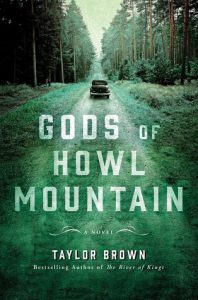
Granny May Docherty lost her daughter Bonni to Dix Hill 30 years ago when nightriders killed her boyfriend, the mill owner’s son Conner, silencing her voice. Her grandson Rory lost his leg to Korea, limiting his employment opportunities on his return home, leaving him little choice but to become a whiskey runner for Eustace Uptree, his best friend’s uncle and Granny May’s lover. Brown takes readers through the rabbit hole away from Mad Men and the American dream of a white picket fence to the colorful and dangerous world of Appalachia, where reigned illegal whiskey and wannabe drivers for the newly founded NASCAR.
A middle-aged wood witch and former prostitute, Granny May longs to know who hurt her girl, but fear of consequences prevents her from pursuing it with Rory. Brown’s subtle backstory of Bonni and Conner’s romance contrasts with the rawness and graphic depiction of mountain life in the 50s. Flooding of mountain valleys for “progress” disrupted Appalachian culture and forced a reluctant relationship with those living in towns and cities. Amy Greene’s “Long Man” shows the resistance of one woman against such flooding by the government. In Brown’s story, the event is long-reaching, since the main road literally heads straight into the man-made lake. As in Amy Greene’s debut novel “Bloodroot,” a body part is used as symbolism of a South yet alive with Pagan ways while tightly holding its secrets.
Taylor Brown digs out niches in his historical fiction—last vestiges of whiskey runners and nascent NASCAR, river kings, the lawlessness at the end of the civil war—getting down to the nitty-gritty of hard-living, developing complex characters who maintain their integrity in impossible situations. He gets a bit too “real” sometimes; for instance, there’s a lot of spitting in this book, some of it from Granny May—so much spitting. In one scene, Eustace flicks his nephew in the nuts. Graphic details can overwhelm the reader, such as when Rory’s rival purposely hits a deer and Brown describes the specifics of the deer’s physical suffering. Having said that, the reader leaves the novel with a sense of having learned history not found in textbooks, such as exactly what someone who drives illegal booze through the mountains does to his car to outrun the revenuers. It’s a definite must-read.

 Finding Femininity and Feminism in France
Finding Femininity and Feminism in France
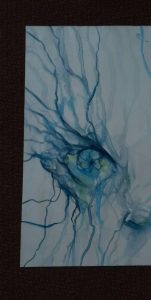
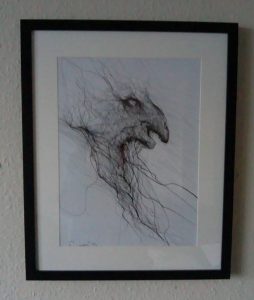

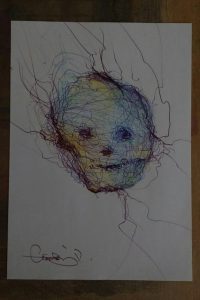

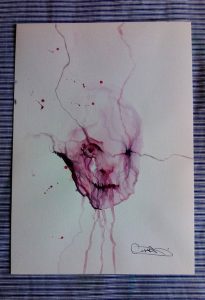
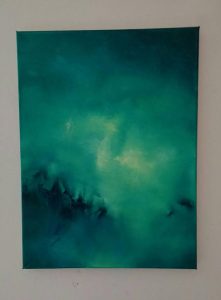

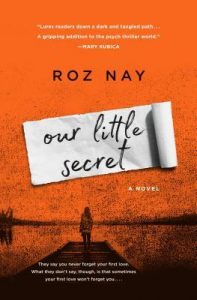 This story opens in an interrogation room, with Angela prepared to tell her story to police, if they will only listen. Finally, Detective Novak allows her to share everything that she feels is relevant, beginning with her meeting H.P. in high school, where he changed her life. They became best friends who fell in love, or as Angela tells the story, soul mates. She leads Detective Novak through their complicated relationship, hampered by her lack of a healthy role model and his small town contentment, and further strained by Angela attending Oxford, where she’s befriended by Freddy, who dotes on her against her will. Detective Novak perks up at the entrance of Saskia, the missing wife, the reason for Angela’s interrogation, during H.P.’s visit to England. Misunderstandings ensue, emotions tangle, and new pathways are formed. Angela blames losing her first love on everyone else, spending her life from that point on waiting for him to do the right thing. When her mother moves in uninvited after leaving her father, she pursues an unhealthy friendship with H.P. as their houseguest and babysitter, which culminates in Saskia’s disappearance. Detective Novak pieces together the evidence through the long night of storytelling by Angela, who is either also an innocent victim or a truly unreliable narrator.
This story opens in an interrogation room, with Angela prepared to tell her story to police, if they will only listen. Finally, Detective Novak allows her to share everything that she feels is relevant, beginning with her meeting H.P. in high school, where he changed her life. They became best friends who fell in love, or as Angela tells the story, soul mates. She leads Detective Novak through their complicated relationship, hampered by her lack of a healthy role model and his small town contentment, and further strained by Angela attending Oxford, where she’s befriended by Freddy, who dotes on her against her will. Detective Novak perks up at the entrance of Saskia, the missing wife, the reason for Angela’s interrogation, during H.P.’s visit to England. Misunderstandings ensue, emotions tangle, and new pathways are formed. Angela blames losing her first love on everyone else, spending her life from that point on waiting for him to do the right thing. When her mother moves in uninvited after leaving her father, she pursues an unhealthy friendship with H.P. as their houseguest and babysitter, which culminates in Saskia’s disappearance. Detective Novak pieces together the evidence through the long night of storytelling by Angela, who is either also an innocent victim or a truly unreliable narrator.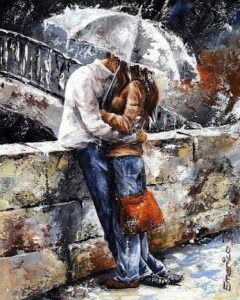
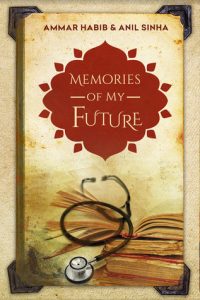 Surgeon Avinash Singh loses a child during surgery to heart failure caused by a new virus. Having accepted always being the best at everything he does, this harsh reality devastates him. His nurse Martha, a second mother in his adopted country, tells him to find a way to deal with it and get back to work. He seeks resolution in the journal of his ancestry given to him by his grandfather. He reads of Khau, the Lion of Bihar, a 13th-century warrior ancestor, who must find a way to save Bihar from the Mongols. Those barbarians destroy everything in their path, because they are unbeatable archers on horseback. Khau determines their weakness and defeats them. The inspirational story motivates Avinash to develop a cure. From this breakthrough, Avinash receives two offers: a position at a coveted medical center in NYC and a chance to offer his skills to a humanitarian effort. He returns to the journal to learn about Veeresh, the leader of his people who did not break under torture by the East India Company’s best “negotiator.” From this lesson, Avi knows he must follow his heart. On this path, he finds true love and faces a challenge that calls out to his warrior blood.
Surgeon Avinash Singh loses a child during surgery to heart failure caused by a new virus. Having accepted always being the best at everything he does, this harsh reality devastates him. His nurse Martha, a second mother in his adopted country, tells him to find a way to deal with it and get back to work. He seeks resolution in the journal of his ancestry given to him by his grandfather. He reads of Khau, the Lion of Bihar, a 13th-century warrior ancestor, who must find a way to save Bihar from the Mongols. Those barbarians destroy everything in their path, because they are unbeatable archers on horseback. Khau determines their weakness and defeats them. The inspirational story motivates Avinash to develop a cure. From this breakthrough, Avinash receives two offers: a position at a coveted medical center in NYC and a chance to offer his skills to a humanitarian effort. He returns to the journal to learn about Veeresh, the leader of his people who did not break under torture by the East India Company’s best “negotiator.” From this lesson, Avi knows he must follow his heart. On this path, he finds true love and faces a challenge that calls out to his warrior blood.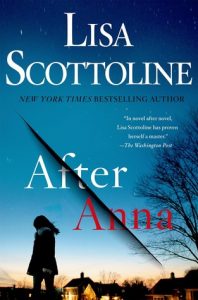 Dr. Noah Alderman is on trial for his life, accused of murdering his stepdaughter. Her father fought ruthlessly for custody of baby Anna as a power play after Maggie suffered the relatively unknown, but common, postpartum psychosis. With his recent death, Anna reaches out to the mother she wants to know. She enters the family, which includes Noah’s 10-year-old son Caleb, with a fortune from her father and an attitude of entitlement. Her accusations of molestation against Noah rend Maggie’s heart. Though circumstantial evidence points to Noah as Anna’s killer, Maggie retains a sliver of hope, not quite able to believe he is capable of such an atrocity. A phone call with shocking news sets Maggie on an investigation that may possibly free Noah and return him to her.
Dr. Noah Alderman is on trial for his life, accused of murdering his stepdaughter. Her father fought ruthlessly for custody of baby Anna as a power play after Maggie suffered the relatively unknown, but common, postpartum psychosis. With his recent death, Anna reaches out to the mother she wants to know. She enters the family, which includes Noah’s 10-year-old son Caleb, with a fortune from her father and an attitude of entitlement. Her accusations of molestation against Noah rend Maggie’s heart. Though circumstantial evidence points to Noah as Anna’s killer, Maggie retains a sliver of hope, not quite able to believe he is capable of such an atrocity. A phone call with shocking news sets Maggie on an investigation that may possibly free Noah and return him to her.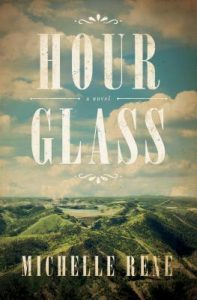 The pa of the Glass children, Jimmy and Flower, dies of smallpox in a pestilent tent hospital in Deadwood, South Dakota. They had pulled him into town from their shack on his gold claim, proving their mettle. Madame Dora DuFran takes charge, and Calamity Jane, who’d followed Wild Bill Hickok to Deadwood, works in the pest tent, caring for their pa, watching him slowly fade. Jimmy and Flower, who goes by Hour, sleep in DuFran’s storage room, which previously housed Jane, who prefers to sleep off her routine drunks outside under the stars, anyway. Hour’s mom, a Lakota, visits Jimmy in his dreams to offer wisdom as he confronts challenges (one of which is first love) in their few weeks at DuFran’s brothel, until their pa passes. Jane holds a fundraiser for her “daughter” Hour’s education, receiving enough to send both children to a convent school, giving them a good start in life. Jimmy channels Jane in a life of constant travel, but Hour marries and raises a family in Kansas City. While working as a storyteller in the Buffalo Bill Wild West Show, Jane meets up with Jimmy and they catch each other up on their lives. Jimmy sees her only once more, in a small town where she was put off the train, at a hotel on her deathbed. The happily ever after comes to Jimmy when his first love finally leaves prostitution for marriage.
The pa of the Glass children, Jimmy and Flower, dies of smallpox in a pestilent tent hospital in Deadwood, South Dakota. They had pulled him into town from their shack on his gold claim, proving their mettle. Madame Dora DuFran takes charge, and Calamity Jane, who’d followed Wild Bill Hickok to Deadwood, works in the pest tent, caring for their pa, watching him slowly fade. Jimmy and Flower, who goes by Hour, sleep in DuFran’s storage room, which previously housed Jane, who prefers to sleep off her routine drunks outside under the stars, anyway. Hour’s mom, a Lakota, visits Jimmy in his dreams to offer wisdom as he confronts challenges (one of which is first love) in their few weeks at DuFran’s brothel, until their pa passes. Jane holds a fundraiser for her “daughter” Hour’s education, receiving enough to send both children to a convent school, giving them a good start in life. Jimmy channels Jane in a life of constant travel, but Hour marries and raises a family in Kansas City. While working as a storyteller in the Buffalo Bill Wild West Show, Jane meets up with Jimmy and they catch each other up on their lives. Jimmy sees her only once more, in a small town where she was put off the train, at a hotel on her deathbed. The happily ever after comes to Jimmy when his first love finally leaves prostitution for marriage.